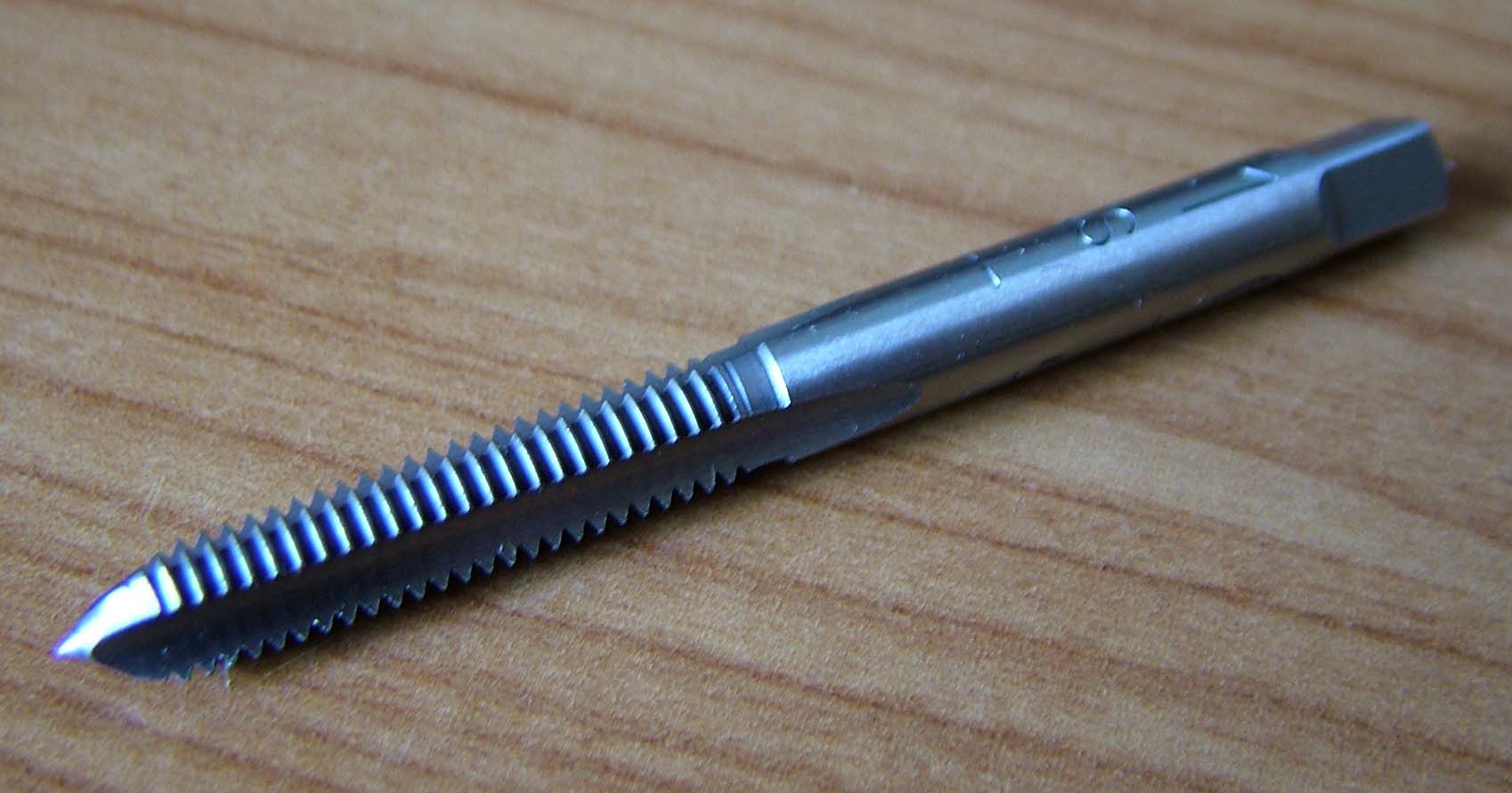| Through Hole |
|
A hole drilled from one
side of the material through to the other side. |
| |
|
|
| Blind Hole |
|
A hole drilled into a material from one
side without penetrating the opposite side. |
| |
|
|
| Tap hole diameter |
|
This is the correct
diameter that should be drilled prior to tapping the female thread |
| |
|
|
| Taper Tap |
 |
This is the initial tap
used to start the tapping process for a female thread. They have a long
lead in of 7 to 10 threads. Also often referred to as '1st Tap'. |
| |
|
|
| Second Tap |
 |
As the name suggests, this
is used after the taper tap to produce the full thread in 'through holes'
or 'blind' holes where the thread does not need to go close to the bottom
of the hole. Sometimes referred to as 'intermediate taps' |
| |
|
|
| Bottom Tap |
 |
Used where the thread is
required to extend near to the bottom of a blind hole. Often termed a
'plug' tap in the UK. |
| |
|
|
| Split Dies |
 |
Dies are used to cut male threads - i.e. as
on a screw. These most common form are split dies which enable some
adjustment of the diameter for increased accuracy and to compensate when
the die eventually wears. |
| |
|
|
| Tap Wrench - 'Tee handle' type |
 |
A tool for holding the tap
during the hand tapping process. The type shown has a chuck that is
tightened by hand to grip the tap. this style is particularly suited for
the smaller tap sizes |
| |
|
|
| Tap Wrench |
 |
An alternative to the tee handled wrench
above, this is the more traditional style that is needed for larger size
taps. Should be used with great care for very small taps due to the long
leverage length |
| |
|
|
| Die Holder |
 |
A tool for holding the die
during the hand tapping process |
| |
|
|























